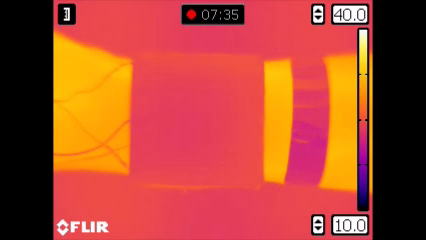ABSTRACT Laser beam shadowing in directed energy deposition process occurs when in-flight powder particles partially block the laser beam, preventing it from fully reaching the melt pool. This blockage alters the beam’s profile, introducing spatio-temporal randomness in heat transfer to…
Tag: Heat Transfer
Processes, models and the influencing factors for enhanced boiling heat transfer in porous structures
Abstract In order to understand the effect of porous structures on boiling heat transfer, this review investigates and evaluates the preparation methods, critical heat fluxes and heat transfer coefficients of porous structures in the field of pool boiling heat transfer…
Thermally engineering templates for highly ordered self-assembled materials
Researchers at the University of Illinois Urbana-Champaign and the University of Michigan Ann Arbor have developed a template material that carries almost no heat and therefore stops heat transfer between the template material itself and the solidifying eutectic material.
TETI 2.0: Understanding nuclear fuel behavior at the atomic level
Researchers are getting a closer look at the behavior of nuclear fuel at the atomic level with the Center for Thermal Energy Transport under Irradiation (TETI) 2.0 technology.
Neutrons reveal key to extraordinary heat transport
Warming a crystal of the mineral fresnoite, Oak Ridge National Laboratory scientists discovered that excitations called phasons carried heat three times farther and faster than phonons, the excitations that usually carry heat through a material.
Story tips: Drought-resistant crops, hydropower, AI for atomic measurement, controlling refrigerants and recycling e-waste
Story tips: Drought-resistant crops, hydropower, AI for atomic measurement, controlling refrigerants and recycling e-waste
Nuclear rocket engine heat transfer research wins best student paper at NETS conference
A research paper about heat transfer inside the reactor of a conceptual liquid-fueled nuclear rocket engine by a University of Alabama in Huntsville (UAH) graduate student won best student paper at the American Nuclear Society’s recent Nuclear and Emerging Technologies for Space (NETS) conference

This wearable device camouflages its wearer no matter the weather
Researchers at the University of California San Diego developed a wearable technology that can hide its wearer from heat-detecting sensors such as night vision goggles, even when the ambient temperature changes–a feat that current state of the art technology cannot match. The technology can adapt to temperature changes in just a few minutes, while keeping the wearer comfortable.